If ever there was a breed of chicken designed to steal hearts, it would be the Cochin.
Cochins are a unique, exotic, and beautiful breed of chicken popular among backyard farmers, hobbyists, and poultry show enthusiasts — for all the right reasons.
These fluffy chickens are known for their large size, friendly personalities, unique feathering patterns, and calm demeanor.
If you’re considering whether or not to add Cochins to your farm or backyard flock, this article will provide you with a comprehensive overview of the breed.
From their history and origin to their personality and more—this is one read you’ll enjoy. Let’s go!

Table of Contents
Cochin Chicken Key Information
| Breed Name | Cochin |
| Breed Classification | Large |
| Colors | Varied |
| Weight | 8.5 – 11 lbs. |
| Temperament | Calm, very friendly |
| Purpose | Meat and eggs; exhibition |
| Productivity | Average |
| Tolerance | Cold hardy, not heat tolerant |
| Egg size | Medium to large |
| Egg color | Brown |
| Broodiness | High |
| Feathered legs | Yes |
| Care requirement | Low |
History
Cochin chickens, formerly known as Shanghai chickens, originated in the Province of Shantung, near Shanghai, China, in the 1800s.
Cochins are believed to have arrived in the US in the early 1800s when China opened its ports to international trade.
However, they became popular after they were gifted to Queen Victoria in the mid-1800s.
Captain Edward Belcher gifted the original Cochins to Queen Victoria, who fell head over heels in love with them.
The Queen then proceeded to display the beautiful birds in her custom aviary.
This debut of the Cochin chicken was met with awe and unrivaled interest.
People took an instant liking to the chickens, and they quickly became an international favorite.
This was the start of “hen fever” across the US and Europe in the mid-19th century.
Cochin chickens grew increasingly popular and were ardently promoted as all-purpose birds.
However, farmers soon discovered that the Cochin didn’t produce enough eggs and that although the breed was praised for its meat, it often turned out to be coarse.
This affected the commercial success of the breed, and since then, the Cochin has become a show bird primarily.
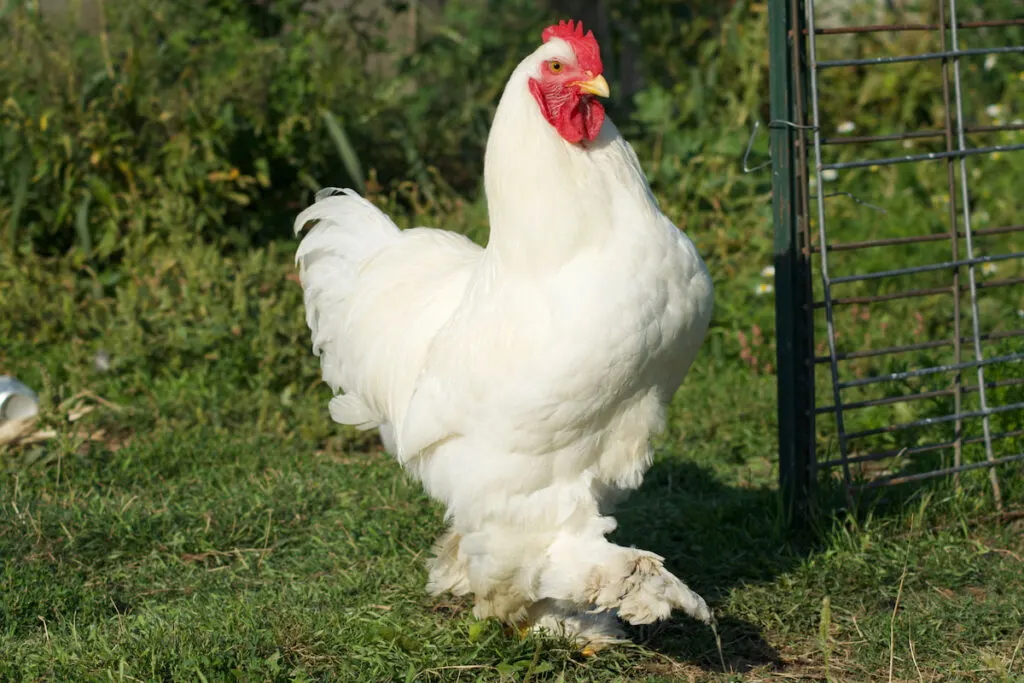
Varieties of the Cochin Chicken
Cochins are one of the few breeds that come in many varieties.
The breed was admitted into the Standard of Perfection of the American Poultry Association in 1874.
The APA Standard of Perfection recognizes nine (9) varieties of standard-sized Cochins, although there are at least 11 varieties.
The varieties of Cochins recognized by the APA include
- The Buff Cochin
- The Partridge cochin
- The White Cochin
- The Black Cochin
- The Silver-Laced Cochin
- The Golden-Laced Cochin
- The Blue Cochin
- The Brown Cochin
- The Barred Cochin
There are also other varieties, like the Lavender and Splash varieties, that the APA currently unrecognizes.
Now, if you thought that was all, you thought wrong!
The Cochin breed also has a bantam version with at least 16 recognized varieties.
Cochin bantams are often called Pekin bantams which, of course, are very different from the true Pekin bantam.
Cochin bantams recognized as standard include
- The Barred bantam Cochin
- The Birchen bantam Cochin
- The Black bantam Cochin
- The Blue bantam Cochin
- The Brown bantam Cochin
- The Brown Red bantam Cochin
- The Buff bantam Cochin
- The Buff Columbian bantam Cochin
- The Columbian bantam Cochin
- The Golden-Laced bantam Cochin
- The Lemon Blue bantam Cochin (very rare)
- The Mottled bantam Cochin
- The Partridge bantam Cochin
- The Red bantam Cochin
- The Silver-Laced bantam Cochin
- The Splash White bantam Cochin
This diversity in color and size strongly adds to the appeal of the Cochin breed.
Because they come in various forms and colors, there is almost always a cochin for everyone.
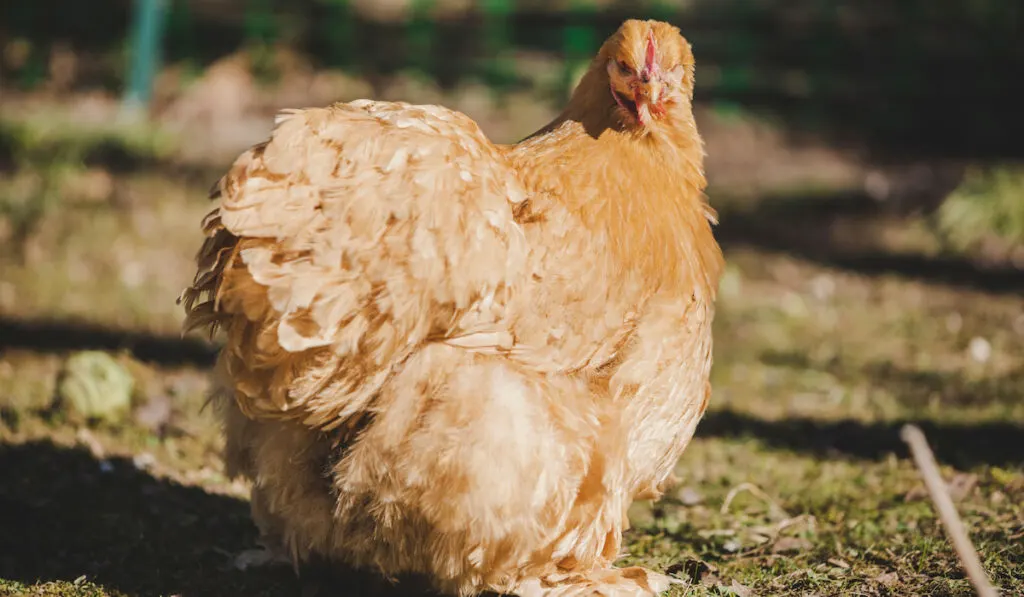
Features of the Cochin Chicken
Cochins are one big bundle of fluff.
While some breeds of chicken are considered random and easily overlooked, it is nearly impossible not to be swayed by the Cochin.
Some of the most impressive features of Cochin chickens are
- Their large size
- Their feathering
- Their body shapes.
These large exotic birds are covered from head to toe in very soft and fluffy feathers.
These fluffy feathers often make them appear a lot bigger than they really are, which can make them look intimidating to predators.
Their feathering, combined with their short but fluffy tails, gives them their heart-shaped body.
They have bright red wattles and ear lobes. Their 5-point comb is also bright red and stands out atop their heavily feathered heads.
They have yellow skin, shanks, legs, toes, and soles. Their eyes are a golden yellow shade, and the color of their beaks varies, depending on the variety.
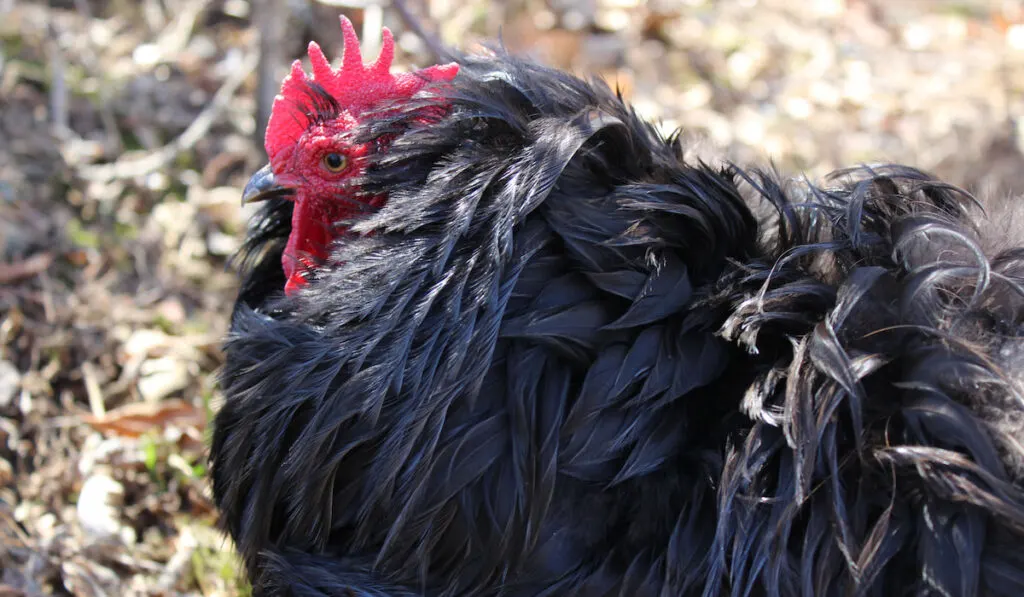
Frizzle Cochins?
There is a type of Cochin chicken known as Frizzle Cochin.
Frizzle Cochins are not a different breed or variety of Cochins. They are called Frizzle because of their unique feathering.
The feathers of Frizzle Cochins are as soft and fluffy as the other varieties of Cochins but are turned outwards and curled. Their frizzle gene causes this frizzle feathering.
What’s the Frizzle Gene?
When two true-bred parents are mated, the alleles of their genes for different traits combine, and sometimes, neither of those genes becomes dominant or recessive. This results in incomplete dominance of the genes.
One such is expressed as the frizzle gene in Cochins.
The frizzle gene results from incomplete dominance of the genes responsible for feathering from their parents.
Frizzle chickens are beautiful but do not do well in cold climates. Their out-turned feathers do little to protect them from harsh weather conditions.
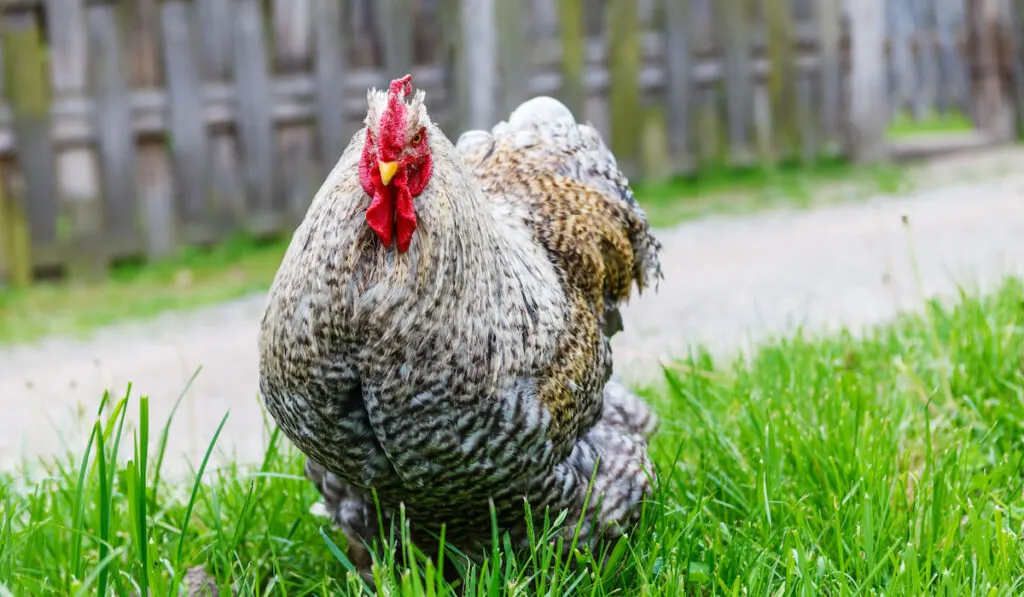
Standard Weights of Cochin Chickens
Roosters: 11 lbs.
Hens: 9 lbs.
Cocks: 9 lbs.
Pullets: 7 lbs.
Cochin Bantams
Roosters: 1.75 lbs.
Hens: 1.63 lbs.
Behavior/Temperament
Cochin chickens are a docile breed and make great pets.
They are also super cuddly, a direct result of their gentle nature and super fluffy feathers.
They are not known for being aggressive and typically get along well with other chickens and animals.
Because of their gentle nature, they are best raised with chickens of the same temperament.
Raising them with aggressive breeds can put them at the receiving end of bullying.
Cochin chickens are known for being very friendly and curious, often approaching humans when they see them.
They are not high-energy birds but enjoy scratching around in the dirt and exploring their surroundings.
Overall, Cochin chickens are laid-back, and that makes a great addition to any flock.

Are Cochin Chickens Good Brooders?
When it comes to brooding and caring for their young, the Cochin chicken takes the prize.
Cochins often go broody, which means they sit on a clutch of eggs until they hatch. Even the roosters brood over eggs!
This is great if you want to breed your own chicks, but it can be problematic if you’re trying to get eggs for eating.
Cochins are known to happily brood over eggs of other breeds like the turkey, ducks, etc., and even raise other birds’ chicks.
Cochins are good mothers and will devotedly care for their young. They can also be very protective and will scare off any predator that tries to harm them.
How to Sex Cochin Chicks
Sexing Cochin chicks can be difficult when they are hatchlings or less than three (3) weeks of age.
The average Cochin chick is usually a soft ball of fluffy feathers, male or female.
However, as they grow, it becomes easier to sex the chicks.
Roosters start growing out their combs at about three (3) weeks of age, while the hens take longer. This is the same for every variety of Cochin.
Roosters are also known to stand taller and more confident than the hens, even as chicks.
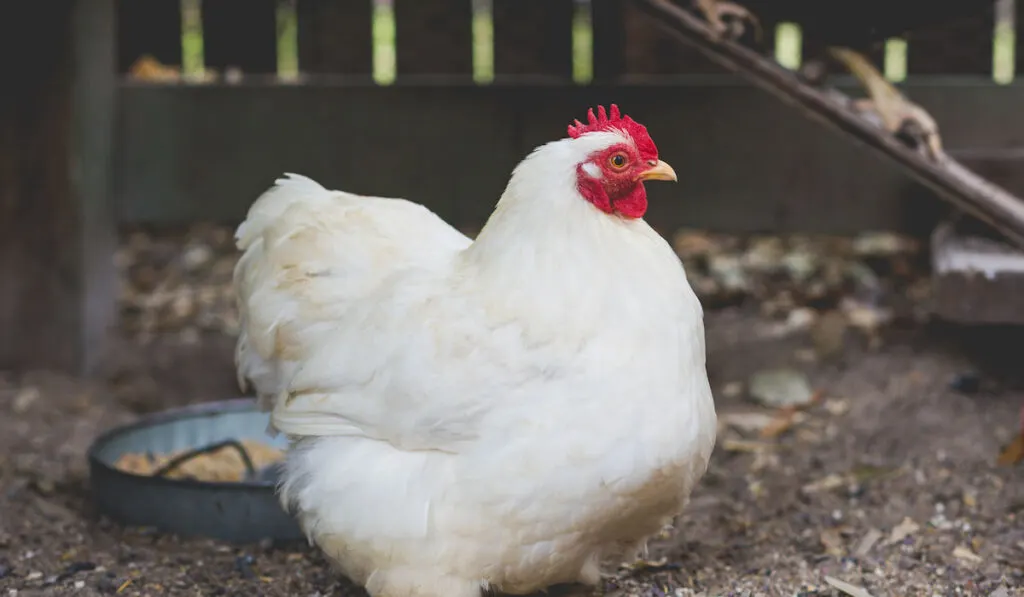
Feeding and Nutrition
Cochins aren’t just big; they have an equally big appetite to match.
Left unchecked, Cochins can keep eating all day. Because they eat so much, they have a natural tendency to grow overly (and lethally) fat.
To prevent this, you’ll need to monitor their rations, what and how often they eat.
A well-rounded diet of quality chicken feed, fresh fruits, and vegetables will ensure your chicken stays healthy.
Water is also essential for proper digestion and other metabolic activities of the body. So, you must ensure they always have access to fresh water daily.
Cochin Chicken: Egg Laying
Cochins are slow developers and mostly start laying eggs at 8-9 months.
While the Cochin doesn’t shine as a great layer of eggs, they produce medium to large brown eggs.
Their eggs can vary in shades but are mostly light brown.
The Cochin chicken lays 150 – 180 eggs annually. However, they can sometimes be unpredictable, especially during winter.
As with all chickens, the Cochin chicken’s diet will determine how healthy her eggs are.
She will typically lay around 2-3 eggs per week, depending on the time of year and her health.
The peak production years of Cochins are the first three (3) years after maturity before their production declines.
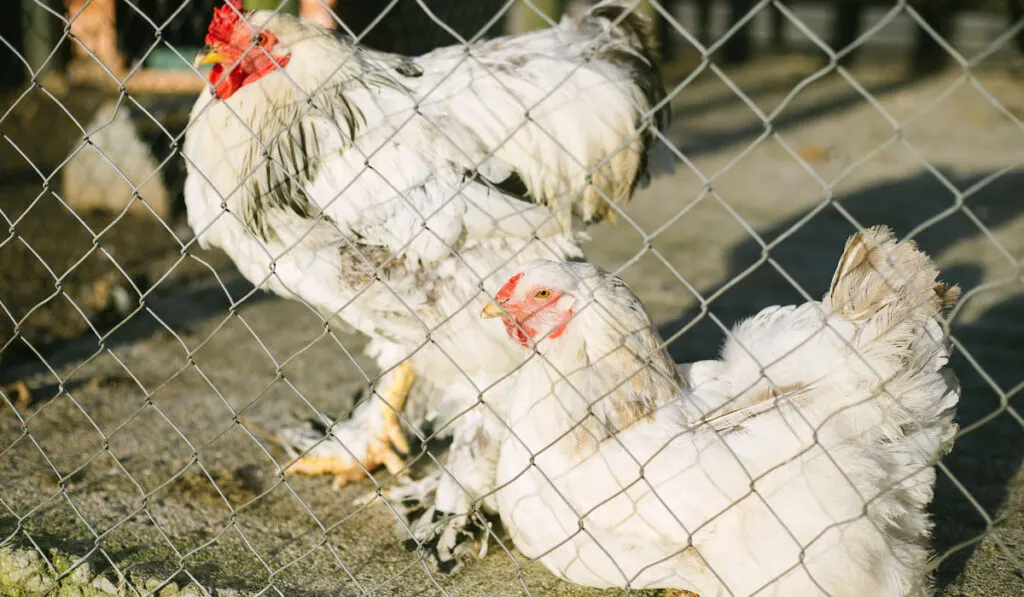
Cochin Chicken Meat: Tender or Coarse?
Cochins have gotten a lot of bad press because of the texture of their meat.
They produce a lot of meat because of their large size, but their meat is dark and coarse. Their meat is known to be coarse regardless of their age, and as they grow, the tenderness of their meat reduces.
While Cochin chicken isn’t the best for meat, there is no disadvantage to eating their meat. Their meat has no special or unique flavor and tastes like any other chicken meat.
In a bid to reduce the coarseness, the chickens can be slaughtered at 8-12 weeks of age, but the meat can be really small.
Most people raise them until they are about 12 or 16 months to slaughter them so they can get a sizeable meat portion.
Cochin Chickens: The Model Show Birds
If there’s one thing the Cochin excels at, it is giving a good show.
The appearance of the Cochin chicken puts them at the center of every show, and quite frankly, no other breed has won as many hearts as the Cochin.
Their feathers, upright carriage, and heart-shaped body are features bound to catch the attention of anyone.
While they may not be the ideal poultry chicken raised for meat and eggs, Cochin chickens shine in the spotlight. It would seem they were developed to do just that, and boy, do they do it well!
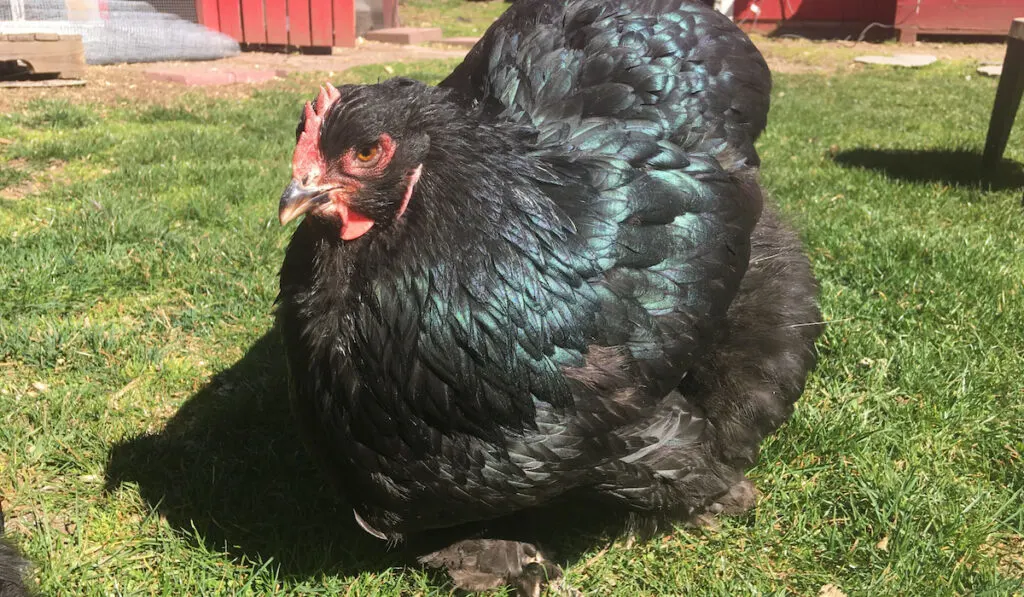
Health and Care
Cochins are hardy birds. They are known to be highly adaptable and can withstand harsh climates.
They also have sturdy genes that make them somewhat resistant to the common health problems that plague chickens.
The average Cochin chicken can live up to 8-10 years with proper care and under the right circumstances.
Although they are highly resistant to most diseases, they can be affected by external and internal poultry parasites.
You can ensure they are routinely dewormed and treated against these parasites.
Vaccinations are also necessary to further strengthen their resistance to diseases.
In cold areas, take extra care to protect your birds from frostbite, especially the roosters.
Because they have more pronounced combs and longer wattles than hens, they are more prone to frostbite.
Coating the comb and wattles with petroleum jelly can better protect them.
However, if you suspect your chicken has an infection or disease, seek medical intervention for proper treatment.
While Cochins are cold hardy, they do not handle heat well and can overheat in hot climates. A shady coop is advised in hot areas to protect them from the heat of the sun.
You should also take steps to protect them against predators. While their size can sometimes be intimidating to predators, it also prevents them from quickly escaping.
Their large size keeps them grounded and can make it difficult for them to evade predators.
Ensure that the coop is secure and that the surrounding areas do not house predators.
Conclusion
Cochin chickens are an excellent choice for both beginner and experienced chicken keepers.
With their friendly personality and docile behavior, these birds make great backyard pets or exhibition birds that are sure to stand out in any crowd.
Although they are not great egg layers or meat birds, they are great companions. They would rather stay home cuddling with you than be left to fend for themselves.
So, if you’re looking for a show–stopper and a great pet, the Cochin chicken should be at the very top of your list!
Resources
- https://www.chickensandyou.com/cochin-chicken
- https://livestockconservancy.org/heritage-breeds/heritage-breeds-list/cochin-chicken
- https://www.backyardchickencoops.com.au/blogs/learning-centre/breed-profile-cochin
- https://www.ecopeanut.com/cochin-chicken
- https://www.knowyourchickens.com/cochin-chicken
- https://www.chickensandmore.com/cochin-chicken
- https://www.heritageacresmarket.com/cochin-chickens
- https://chickenscratchny.com/cochin-chicken
- https://www.heritageacresmarket.com/cochin-chickens/
- https://thefrugalchicken.com/cochin-chickens
- https://www.farmingx.in/cochin-chicken
- https://www.welphatchery.com/bantams/cochin-bantam-white-straight-run
- https://www.dare2dreamfarms.com/ChickenBreeds/Cochin
